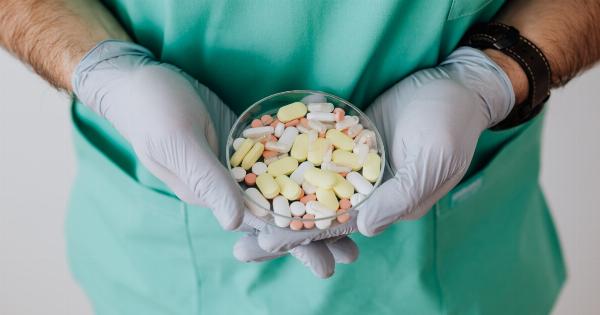Childbirth is a transformative experience for women, but it can also be accompanied by intense pain and discomfort.
While medical interventions such as epidurals and pain medications are commonly used to manage labor pain, some women seek natural alternatives to alleviate their discomfort. One such alternative gaining recognition is the use of Vitamin D supplementation during pregnancy and childbirth.
In addition to its well-known role in bone health, Vitamin D has been found to have pain-relieving properties, making it an attractive option for women looking for a natural approach to pain management during childbirth.
The Importance of Vitamin D during Pregnancy
Vitamin D, also known as the sunshine vitamin, plays a crucial role in various physiological processes in the body. Its primary function is to aid in the absorption and utilization of calcium, which is essential for healthy bone development.
However, several studies have highlighted the importance of Vitamin D beyond bone health, particularly during pregnancy.
During pregnancy, adequate Vitamin D levels are vital for both the expectant mother and the developing fetus.
It supports the proper growth and development of the baby’s bones and teeth, helps regulate the mother’s immune system, and plays a role in preventing complications such as preeclampsia and gestational diabetes. Additionally, studies have linked Vitamin D deficiency during pregnancy to an increased risk of preterm birth and low birth weight.
Vitamin D’s Role as a Natural Pain Reliever
Besides its essential role in pregnancy, emerging research suggests that Vitamin D also possesses pain-relieving properties.
Studies have shown that adequate Vitamin D levels can help alleviate pain associated with various conditions, such as arthritis, fibromyalgia, and chronic back pain. It is believed that Vitamin D’s pain-relieving effects are due to its anti-inflammatory properties.
During childbirth, women experience intense contractions and uterine pain as the body works to deliver the baby. This pain can be overwhelming and may require medical interventions for pain management.
However, by maintaining optimal Vitamin D levels during pregnancy, women may be able to naturally manage their labor pain to some extent.
Researchers have found a correlation between low Vitamin D levels and increased pain sensitivity.
In a study published in the Journal of Obstetric, Gynecologic, and Neonatal Nursing, women with lower Vitamin D levels experienced higher pain intensity during labor compared to those with sufficient Vitamin D levels. This suggests that maintaining adequate Vitamin D levels during pregnancy may help reduce labor pain and discomfort.
How to Increase Vitamin D Levels
In order to harness the potential pain-relieving benefits of Vitamin D during childbirth, it is important for expectant mothers to maintain optimal Vitamin D levels. Here are some ways to increase Vitamin D levels:.
1. Sun Exposure
The primary source of Vitamin D is sunlight. When the sun’s ultraviolet B rays come into contact with the skin, Vitamin D synthesis occurs. Spending time outdoors, especially during midday, can help boost Vitamin D levels naturally.
However, it is important to practice sun safety and avoid excessive sun exposure to reduce the risk of skin damage and sunburn.
2. Dietary Sources
While it is challenging to obtain sufficient Vitamin D through diet alone, certain foods can contribute to Vitamin D intake. Some dietary sources of Vitamin D include fatty fish like salmon and mackerel, fortified dairy products, and egg yolks.
Including these foods in the diet can help increase Vitamin D levels, especially if sun exposure is limited.
3. Vitamin D Supplements
When natural sources of Vitamin D are insufficient, supplements may be recommended by healthcare professionals.
Prenatal vitamins often contain Vitamin D, but additional supplementation may be necessary depending on an individual’s Vitamin D levels. It is important to consult with a healthcare provider to determine the appropriate dosage of Vitamin D supplements.
The Potential Benefits of Vitamin D for Labor Pain
The potential benefits of maintaining adequate Vitamin D levels during childbirth extend beyond pain relief.
Some studies have shown that Vitamin D deficiency is associated with longer labor duration and an increased likelihood of needing medical interventions such as cesarean sections. By optimizing Vitamin D levels, women may not only experience reduced pain but also potentially have a smoother and shorter labor process.
Furthermore, Vitamin D’s role in immune modulation may contribute to a healthier overall pregnancy. It helps regulate the immune system, reducing the risk of infections and inflammation that could potentially complicate childbirth.
Additionally, Vitamin D’s involvement in bone development may promote stronger pelvic bones, potentially reducing the risk of pelvic pain and injuries during labor.
Consulting with Healthcare Professionals
While Vitamin D supplementation shows promise as a natural pain reliever during childbirth, it is essential for expectant mothers to consult with their healthcare professionals before making any decisions.
Healthcare providers can assess a woman’s Vitamin D levels through blood tests, provide guidance on safe supplementation, and offer personalized recommendations based on individual needs and medical history.
Conclusion
Vitamin D supplementation during pregnancy has gained attention not only for its importance in promoting healthy bone development but also for its potential role as a natural pain reliever during childbirth.
Maintaining adequate Vitamin D levels may help reduce labor pain while offering additional benefits such as immune modulation and stronger pelvic bones. However, it is crucial for expectant mothers to consult with their healthcare providers for personalized guidance on Vitamin D intake and supplementation.
By doing so, women can explore natural alternatives and make informed decisions to optimize their childbirth experience.































